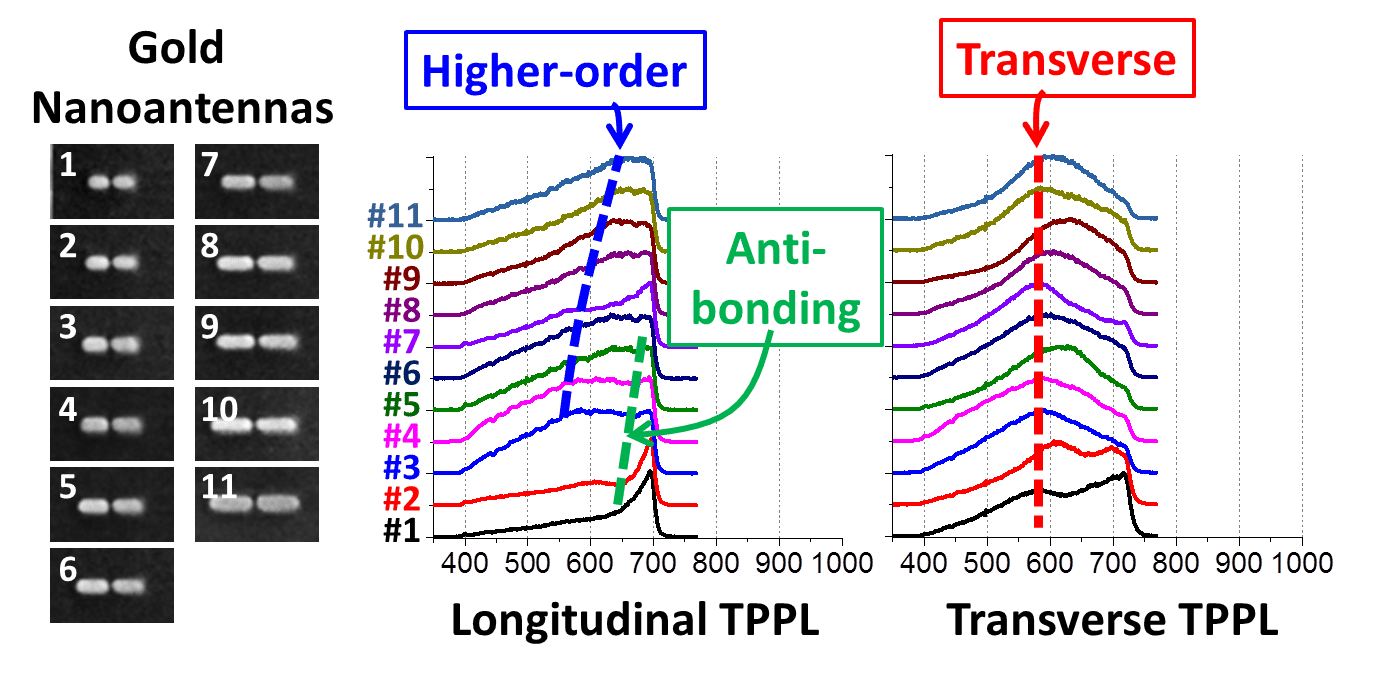
The Modulation Effect of Local Density of Optical states of Plasmonic Nanoantennas on their Photoluminescence
Upon resonant excitation, gold plasmonic nanoantennas can generate strongly depolarized two-photon photoluminescence (TPPL), which serves as ideal local broadband visible source for the spectroscopic investigation of nanoantenna eigenmodes [1, 2]. In this work, TPPL emission spectra of three arrays of single-crystalline gold nanoantennas are comprehensively investigated with careful comparison with dark-field scattering spectra and numerically simulated spectra. We demonstrate the modulation of the TPPL spectrum due to the transverse bonding mode, the higher-order bonding modes and the dark anti-bonding modes [2]. Numerical simulations are performed in order to confirm the resonance phenomenon. Our work provides direct experimental evidence on the nanoantenna-mediated near-to-far-field energy coupling and gains insight into the emission spectrum of the TPPL from gold nanoantennas.

Fig. 1: SEM images of the single-crystalline gold nanoantennas (left) and the TPPL spectra showing the modulation effects of the non-fundamental longitudinal modes (middle) and the fundamental transverse mode (right).
[1] Wissert, M. D.; Ilin, K. S.; Siegel, M.; Lemmer, U.; Eisler, H.-J. Coupled Nanoantenna Plasmon Resonance Spectra from Two-Photon Laser Excitation. Nano Lett. 10, 4161-4165 (2010).
[2] Huang, J.-S.; Kern, J.; Geisler, P.; Weinmann, P.; Kamp, M.; Forchel, A.; Biagioni, P.; Hecht, B. Mode Imaging and Selection in Strongly Coupled Nanoantennas. Nano Lett. 10, 2105-2110 (2010).
fc.lin25@gmail.com
Powered by Eventact EMS